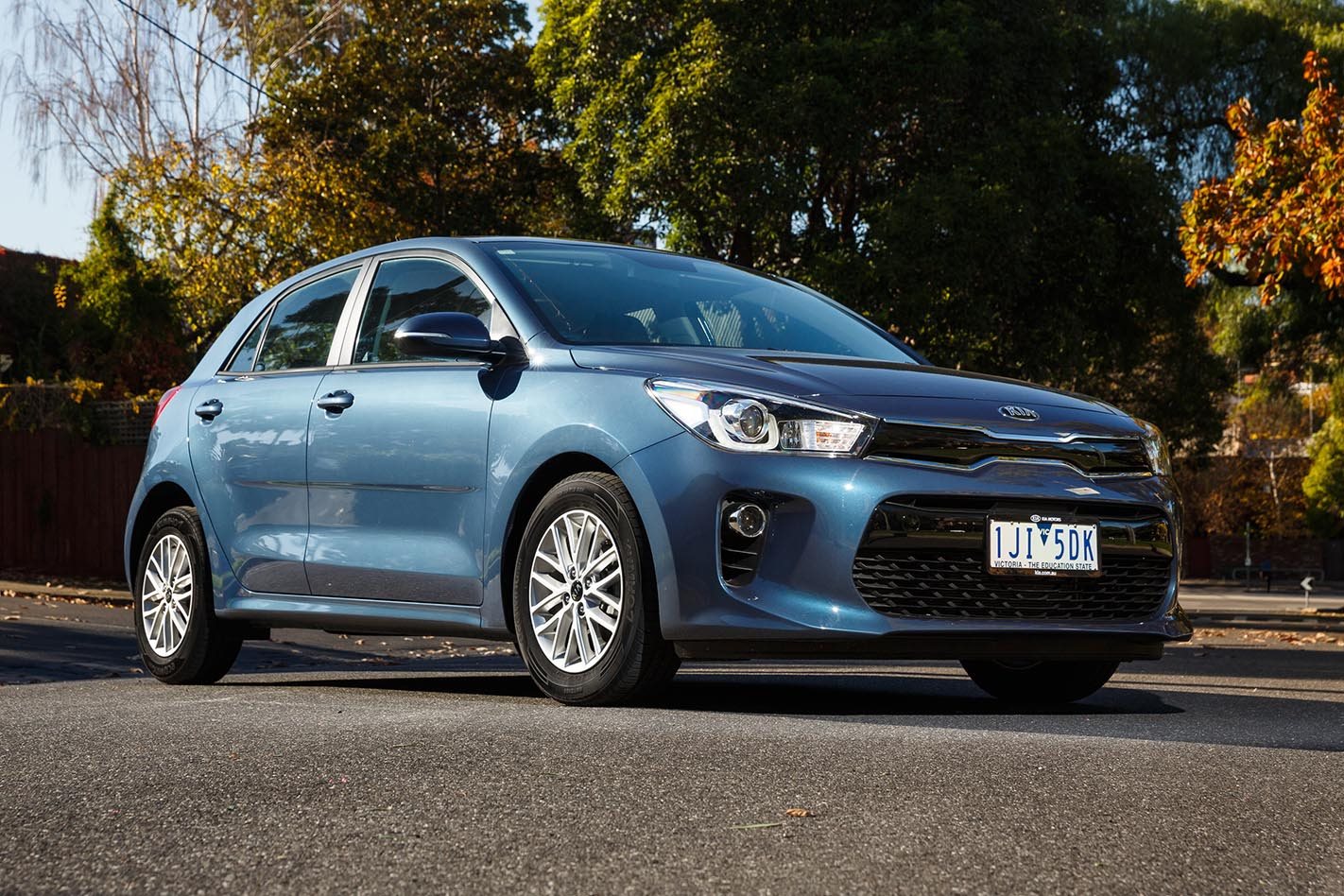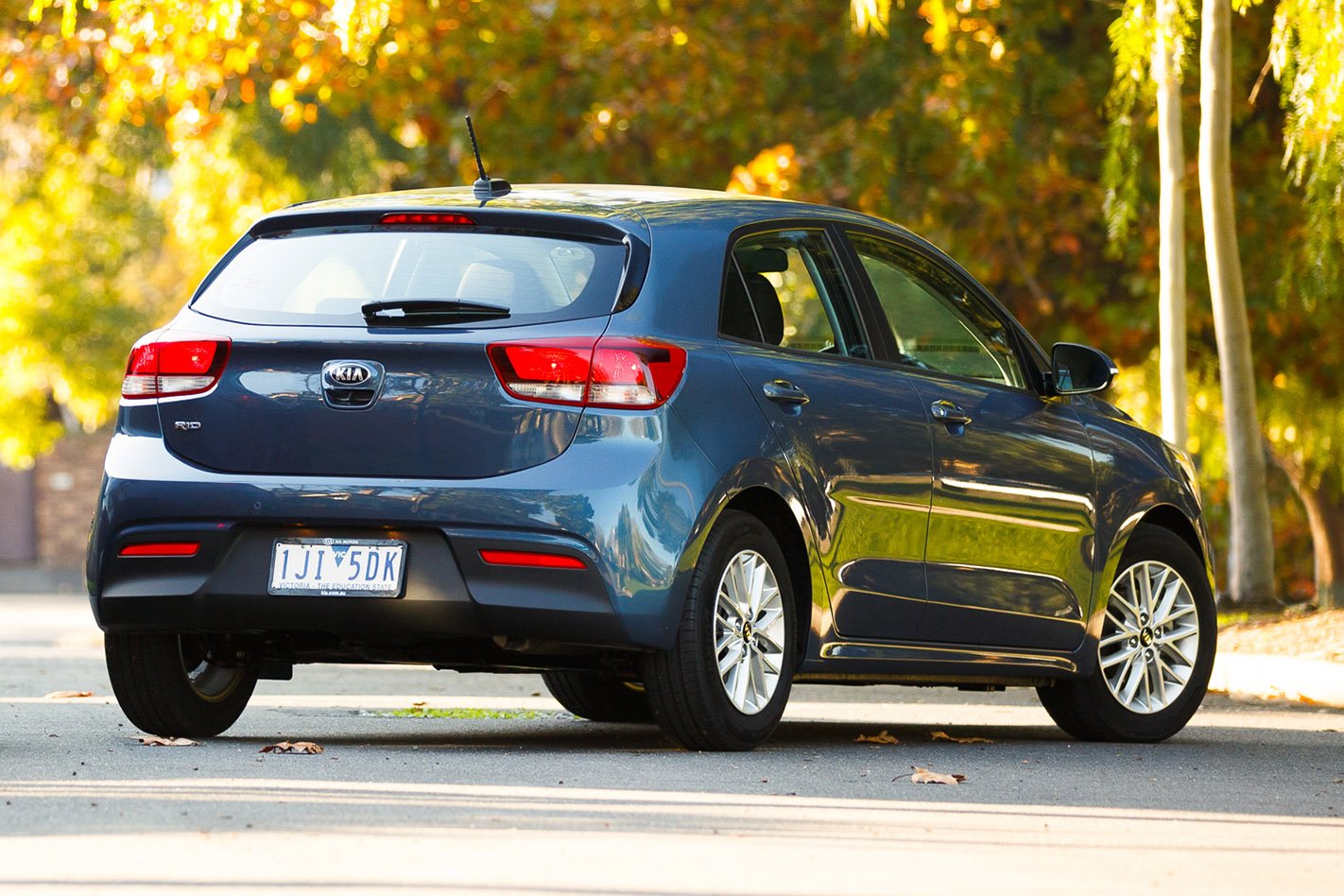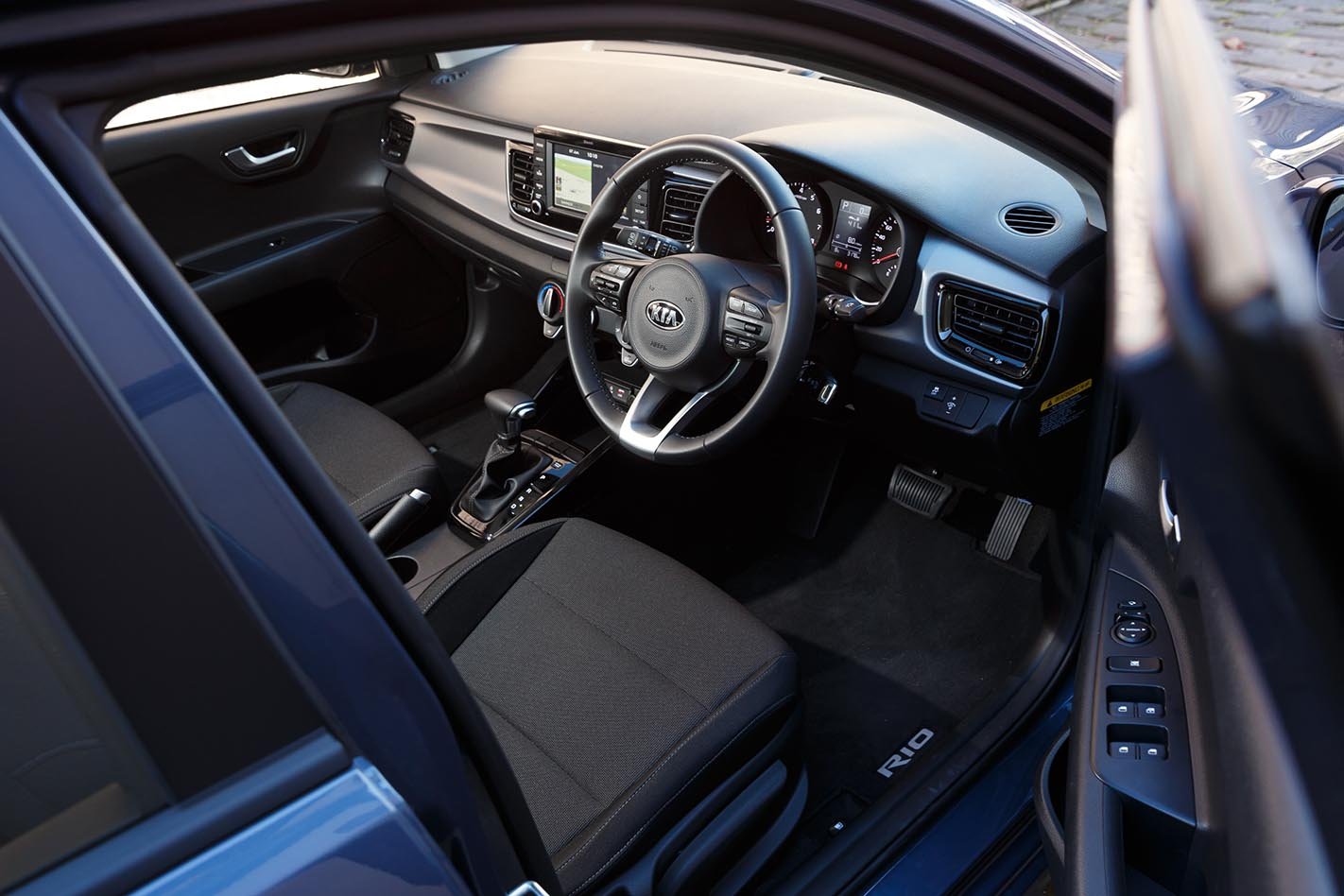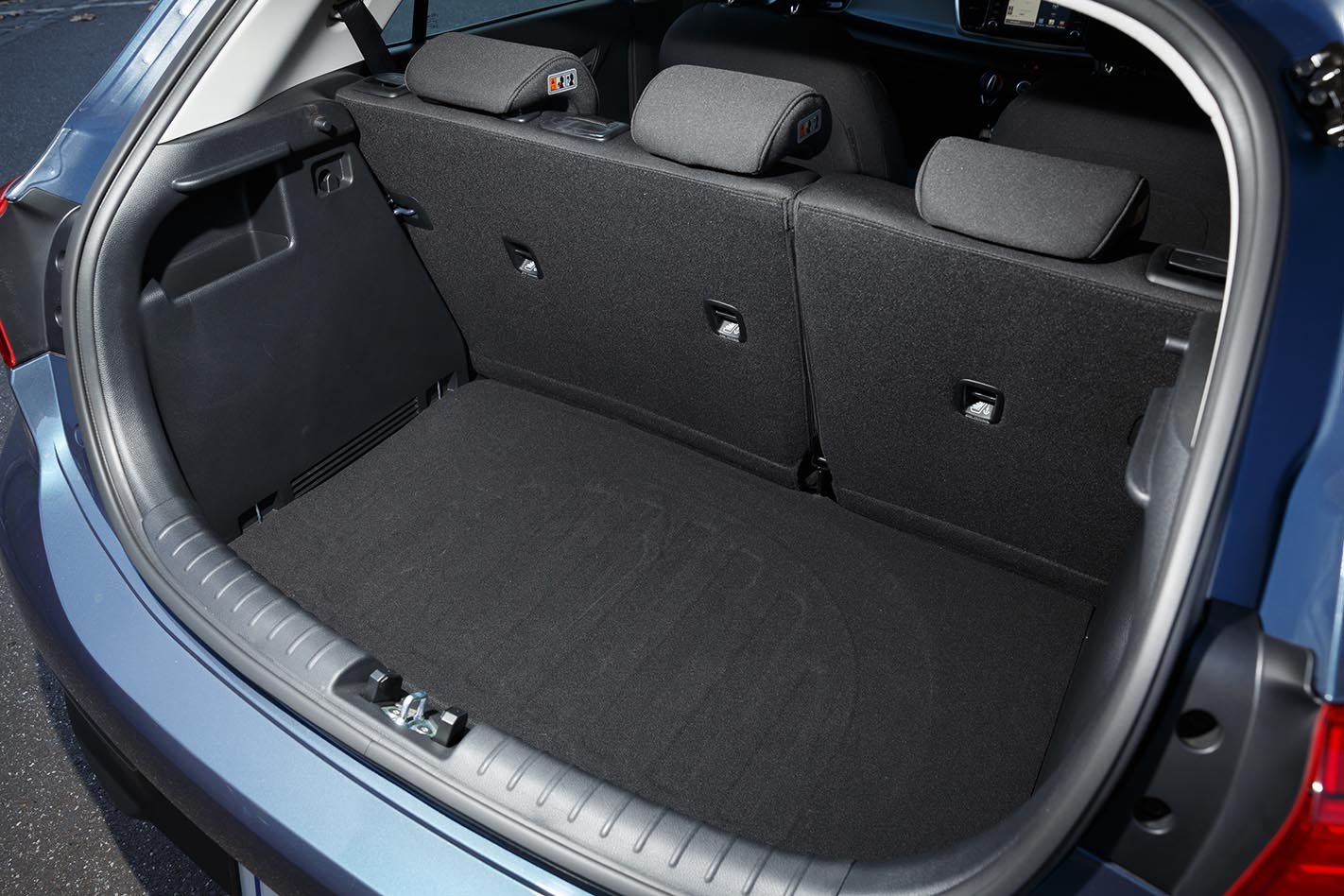
TELL ME ABOUT THIS CAR
Kia employed its European and Californian design studios to give its all-new Rio hatch a fresher, more mature look. But alongside new aesthetics the new Rio is slightly bigger than the model it replaces thanks to a 10 millimetre longer wheelbase, while a slightly lower roofline endows it with a squatter, more assertive stance. This means more room inside, while cabin improvements and new technology impart an upmarket feel and bring a sense of maturity to Kia’s light segment entrant.

Retailing at $21,490, the auto-only Kia Rio Si tested here sits in the middle of the three-tier range and shares equipment with the entry-level Rio S auto [$19,090] including a 7.5-inch touchscreen, reversing camera, rear parking sensors, automatic headlights and power windows, with the addition of cruise control, satellite navigation, digital radio, LED daytime lights and alloy wheels.

STRENGTHS
- The interior is understated but elegant, with a floating infotainment screen and none of the visual clutter of the previous model. Piano black surfaces add to the premium look.
- The infotainment system is intuitive. It has Apple CarPlay and Android Auto and the digital radio interface makes it easy to find a channel and store favourites.
- The sat-nav provides warnings about fixed speed/red light cameras which are disturbingly frequent – especially around Melbourne.
- It’s the only car in its class to feature a USB socket for the rear seats.
- There’s plenty of cabin storage for a car this size, including a centre console bin with padded lid that acts as an armrest, cup holders in the centre and all four doors, sunglass holder above the mirror, and a generous space in front of the gear knob to leave a phone and keys.

- Boot space is up 37 litres to 325 litres, opening up to a considerable 980 litres with the 60-40 split rear seats folded down. The wide hatch opening helps make loading cargo easier.
- The rear seats are comfortable with good lower back and under thigh support, and decent legroom for a car of this size. There’s plenty of room for two adults or three kids.
- The Rio’s low window line means good side vision for rear seat passengers.
- Suspension has been tuned by Kia’s Australian engineers to suit local conditions and it complies well even on choppy dirt roads. The ride is firm without being hard, though it can be a little spongy on bigger bumps.
- Steering is well weighted and responsive.
- It comes with Kia’s industry leading seven-year warranty.

WEAKNESSES
- It’s one of the few cars to be released in 2017 without advanced driver assistance features including automatic emergency braking. Not uncommon in this segment, but perhaps a missed opportunity by Kia Australia.
- Kia carried over the weaker of two powertrains from the previous range with a 1.4-litre four-cylinder petrol engine coupled with a four-speed automatic transmission. It’s OK around town but putting the foot down results in plenty of noise but not much motivation.
- The 1.4-litre engine works better with the six-speed manual gearbox, but that transmission isn’t available with the Rio Si – only the base Rio S.
- While the interior has been improved, the door trims are still clad with cheap looking hard plastic.
The new Kia Rio stands up well amongst all its light car competitors including the Ford Fiesta, Holden Barina, Honda Jazz, Hyundai Accent, Mazda 2, Mitsubishi Mirage, Renault Clio, Toyota Yaris and Volkswagen Polo. Its bigger dimensions put it up for consideration against the Hyundai i30, Peugeot 308, Toyota Corolla and Volkswagen Golf.




